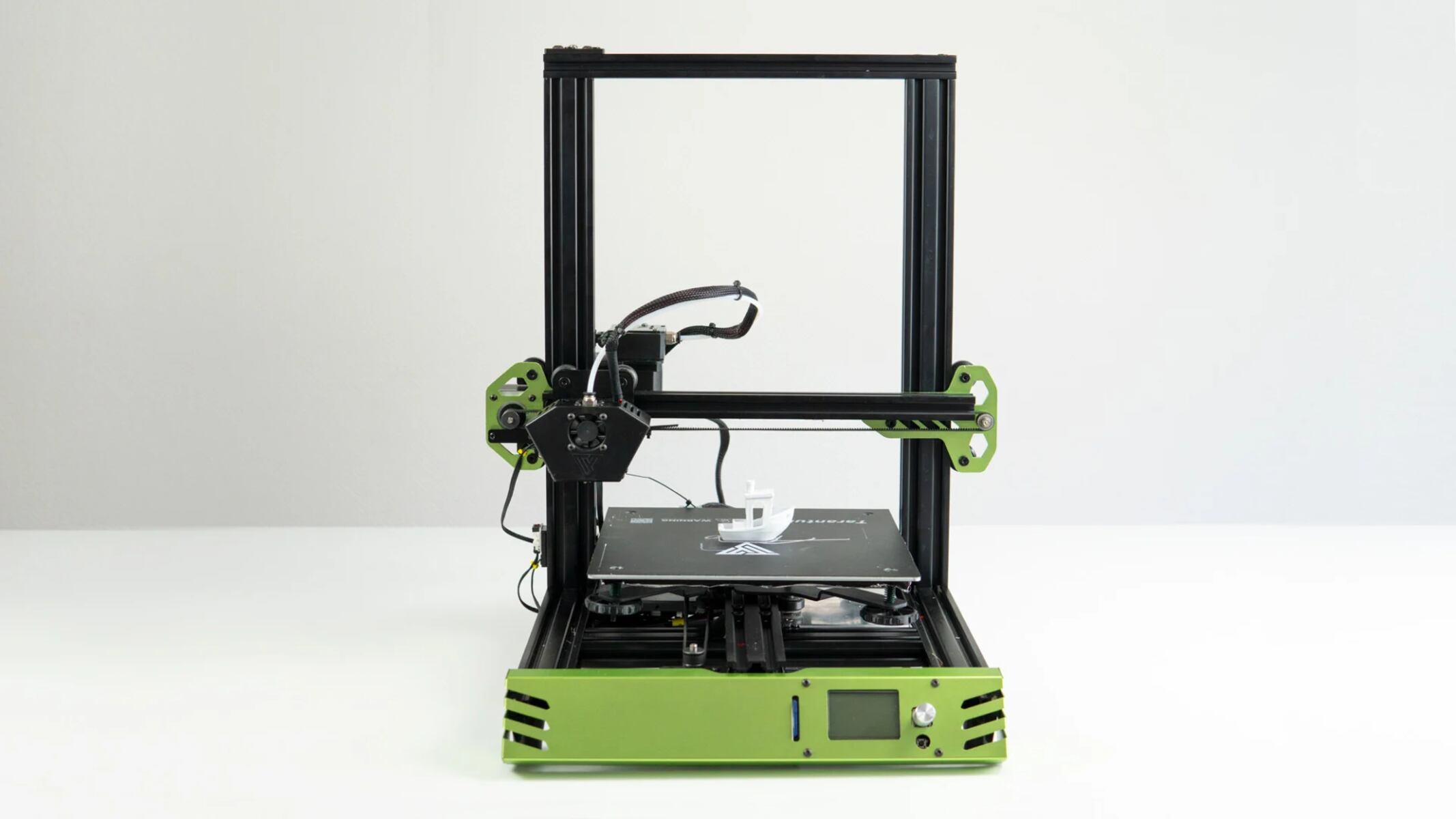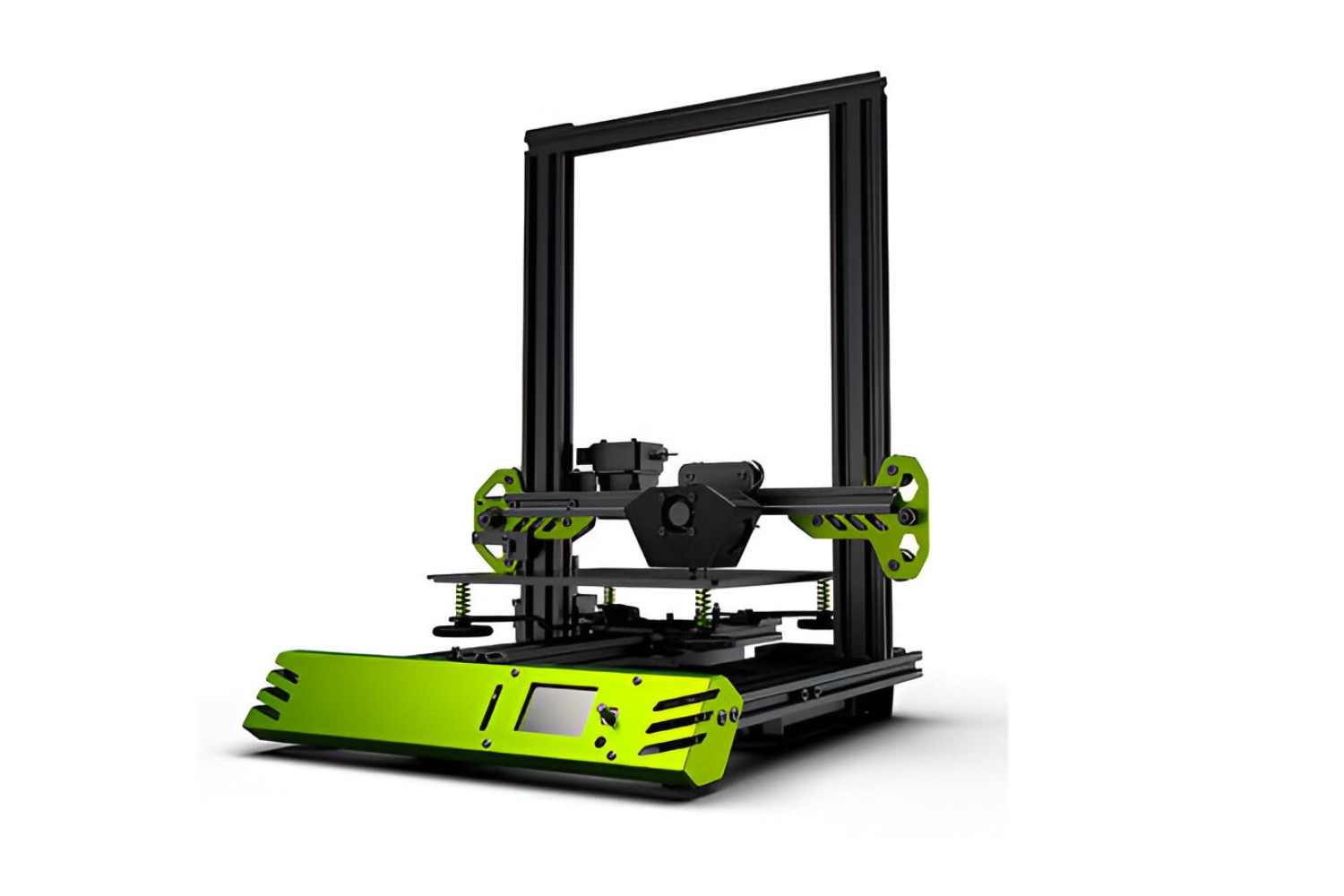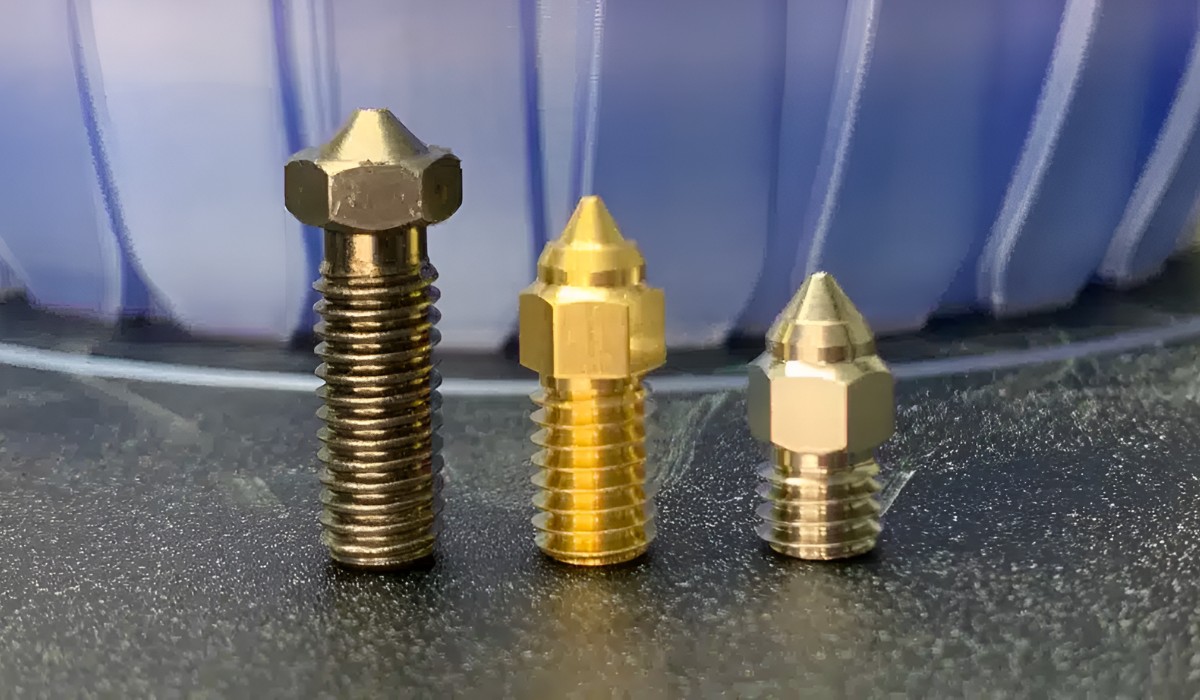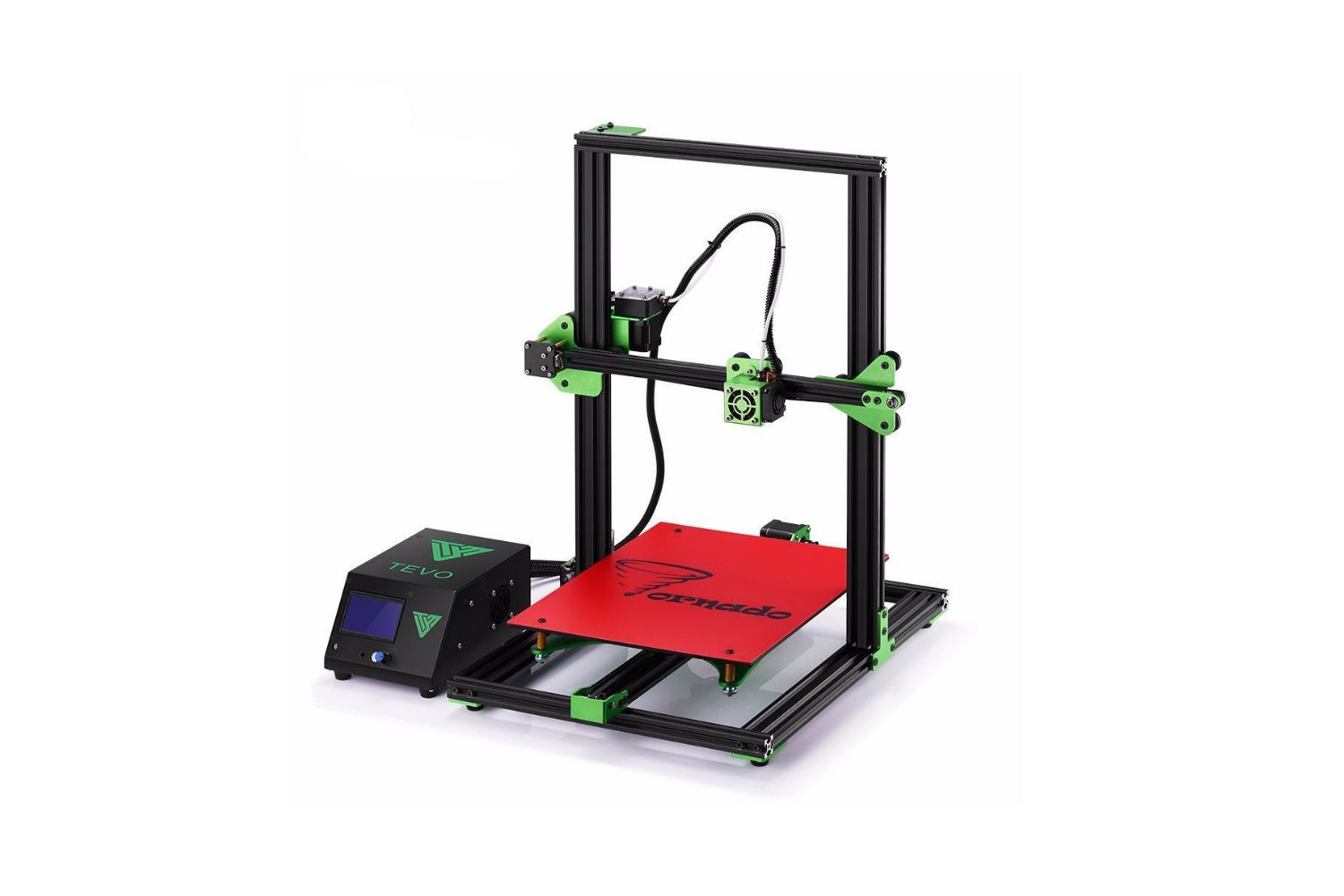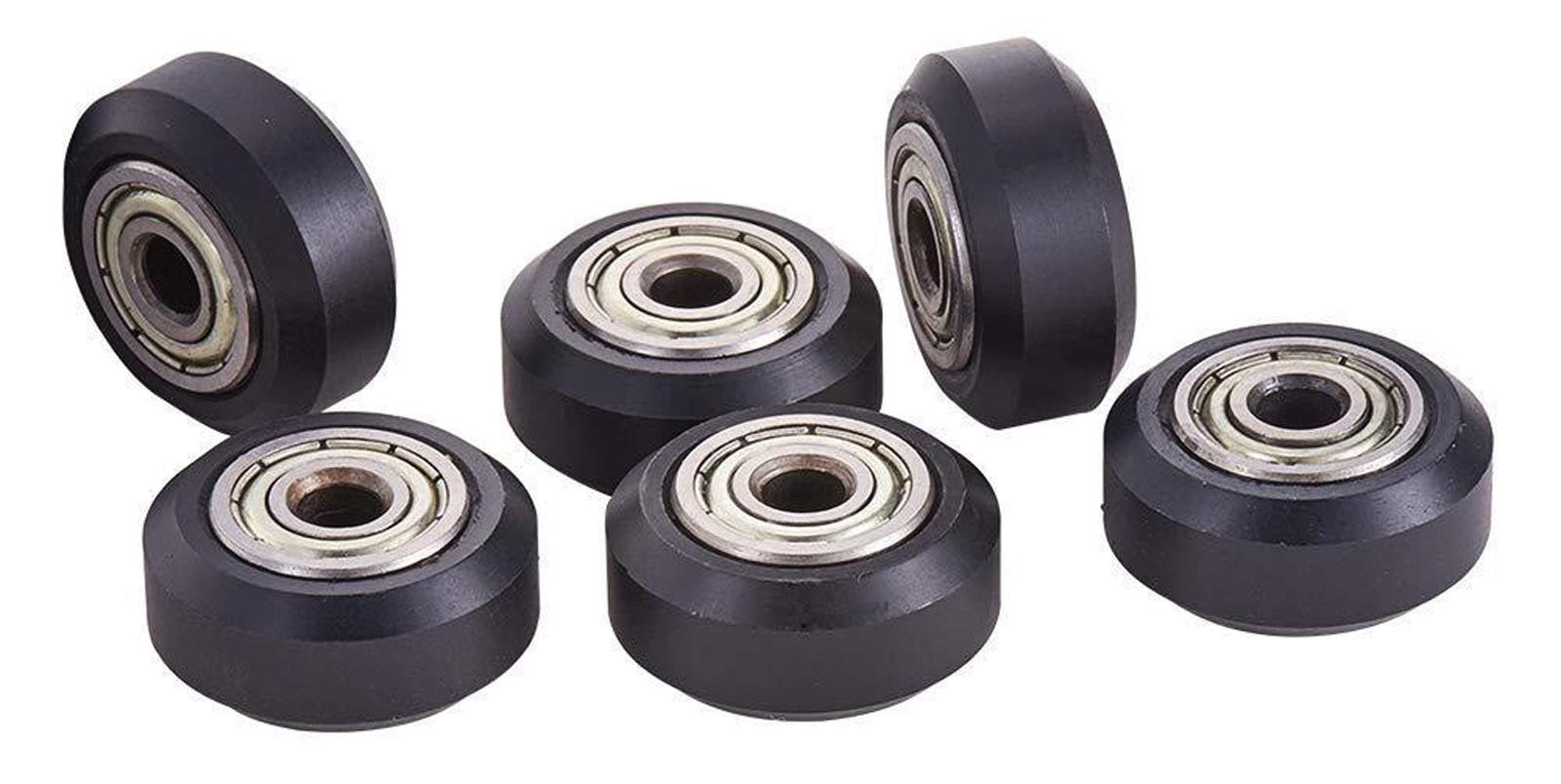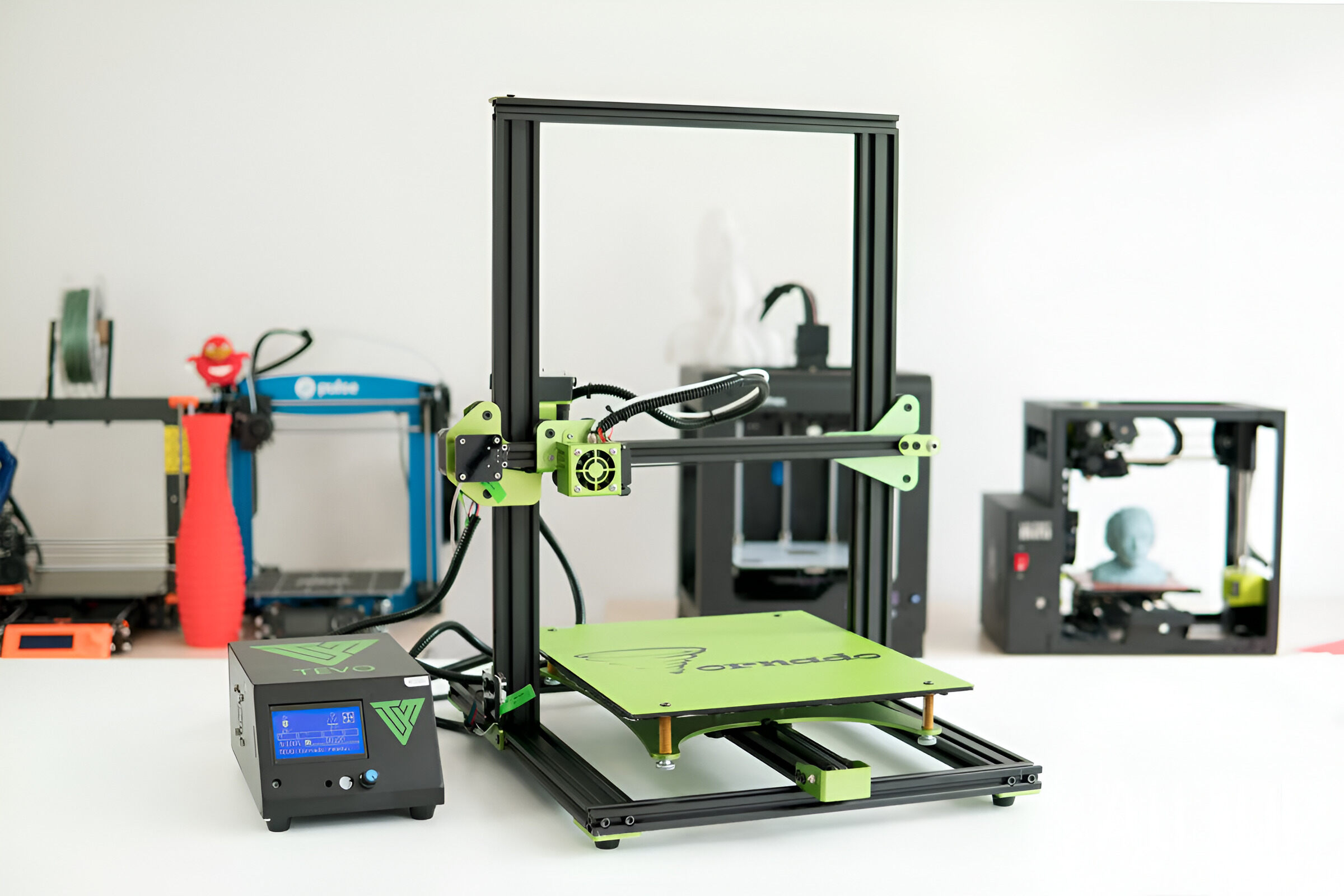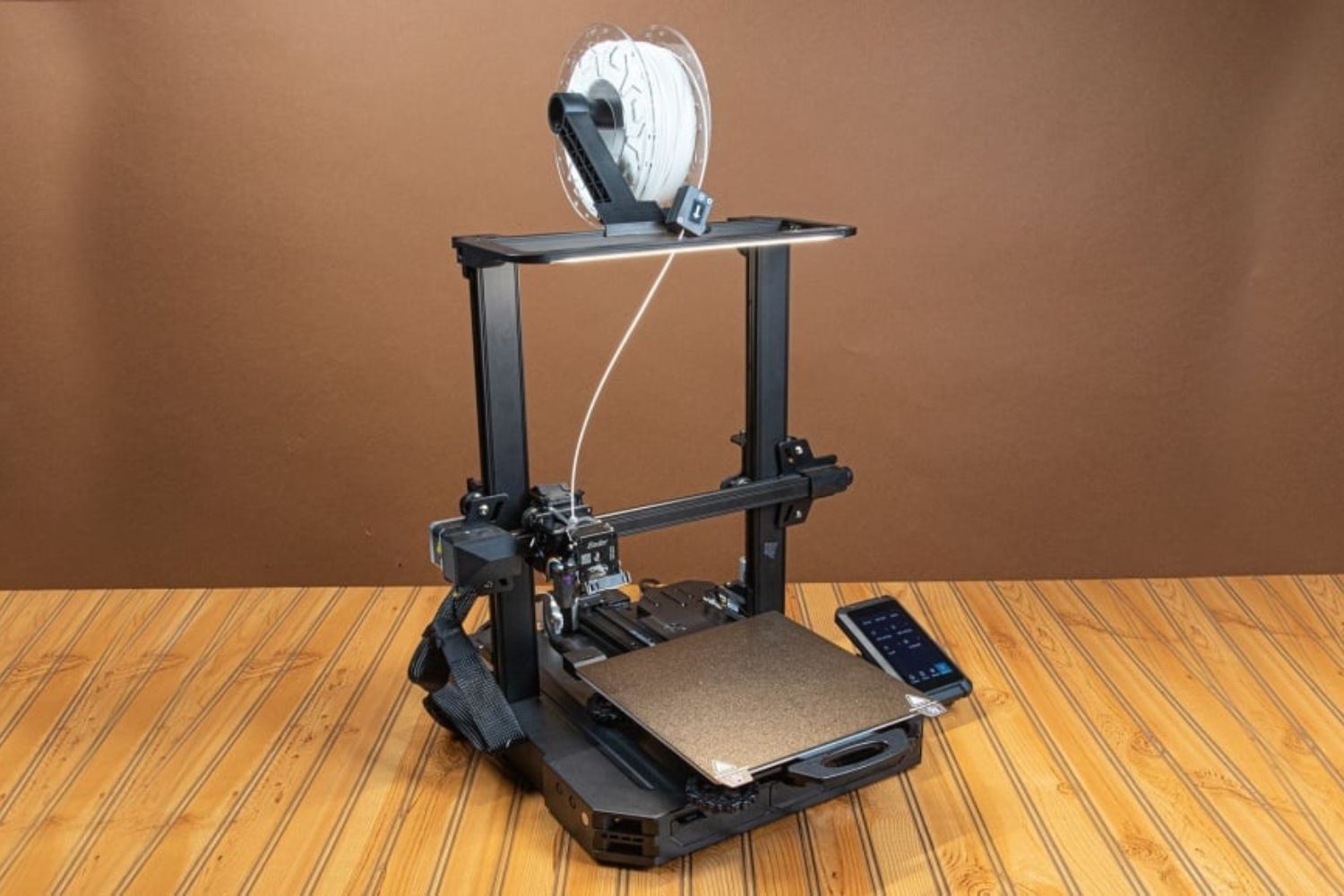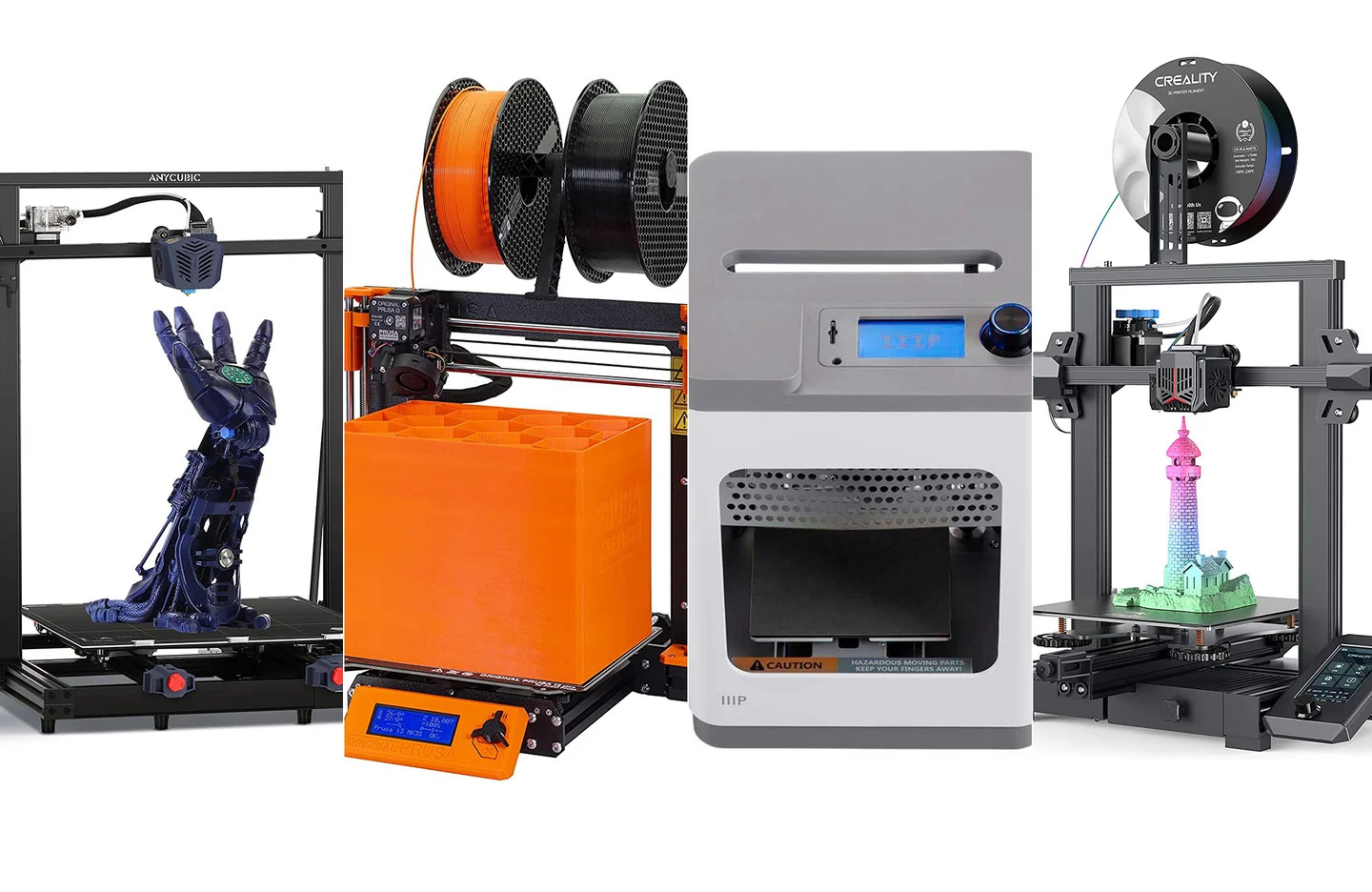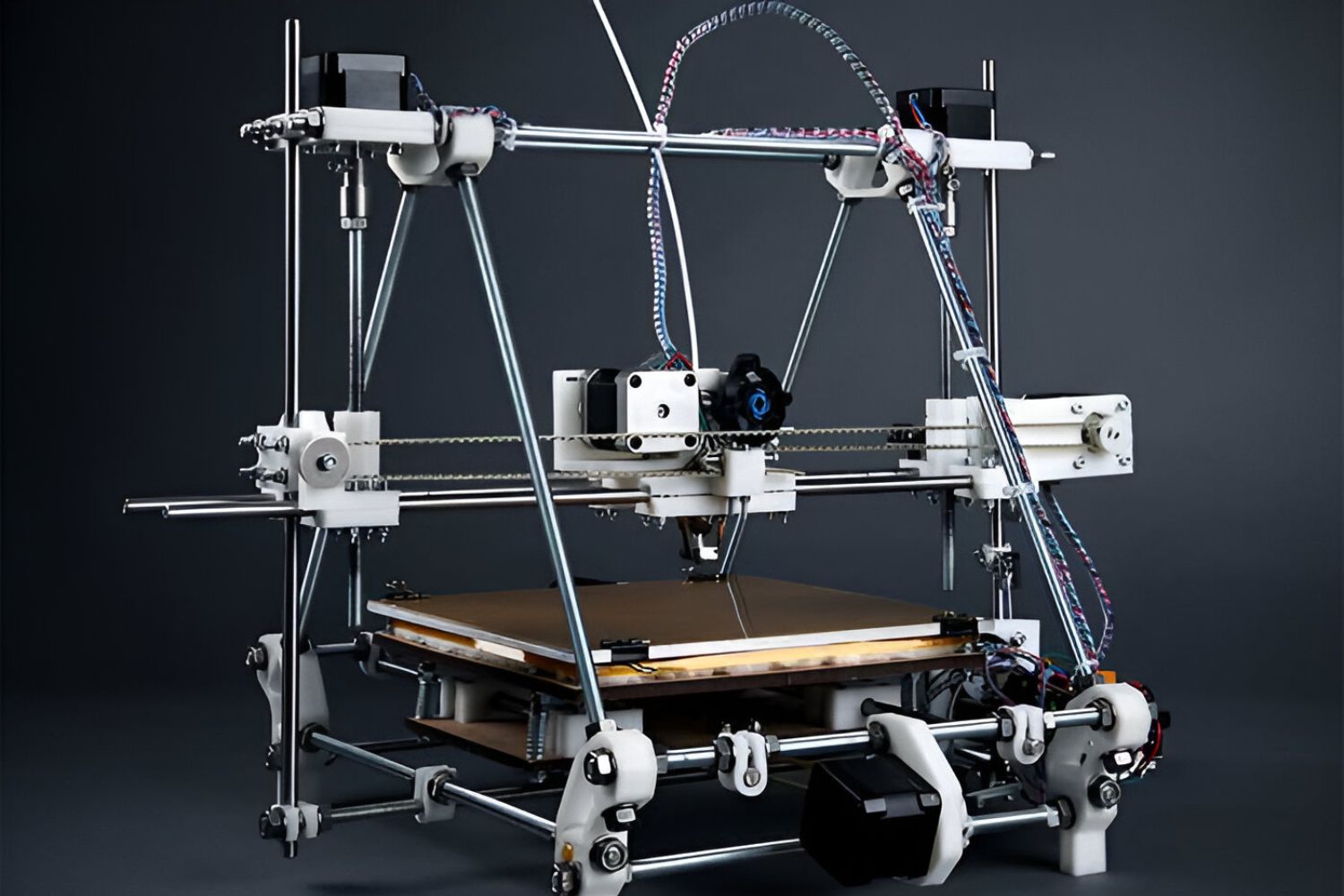Introduction
Welcome to the world of 3D printing! As technology continues to advance, the possibilities for creating three-dimensional objects have become more accessible than ever before. One popular option in the market is the Tevo Tarantula, a versatile and affordable 3D printer that has gained a lot of attention among enthusiasts and professionals alike.
In this article, we will explore what sets the Tevo Tarantula apart from other 3D printers and why it has become a popular choice among makers. We will delve into its specifications, features, build quality, print accuracy, assembly process, and even potential upgrades and troubleshooting tips. Whether you are considering purchasing a 3D printer for your personal projects or seeking to expand your knowledge in this field, this article will provide you with valuable insights into the Tevo Tarantula.
The Tevo Tarantula offers a unique balance between affordability and functionality, making it an attractive option for both beginners and experienced users. Its open-source design allows for customization and adaptability, offering endless possibilities for innovation and experimentation. With its robust construction and reliable performance, the Tevo Tarantula has gained a loyal following within the 3D printing community.
Throughout this article, we will delve into the various aspects of the Tevo Tarantula, providing you with a comprehensive understanding of its capabilities and limitations. By the end, you will have the knowledge needed to determine if the Tevo Tarantula is the right 3D printer for your needs.
Overview of Tevo Tarantula
The Tevo Tarantula is a 3D printer that has gained popularity for its affordability and versatility. It is an open-source printer, which means its design and software are freely available for modification and customization. This flexibility has made it a favorite among makers and DIY enthusiasts who enjoy experimenting and improving their printing experience.
The Tevo Tarantula features a sturdy aluminum frame that provides stability during the printing process. Its large build volume allows for printing objects of various sizes, making it suitable for a wide range of applications. Whether you’re looking to create functional prototypes, artistic pieces, or even household items, the Tarantula can handle it.
One of the standout features of the Tevo Tarantula is its compatibility with a wide range of filament materials. From PLA to ABS, PETG, and even flexible filaments like TPU, the Tarantula has the flexibility to handle different materials, depending on your project requirements. This versatility ensures that you can bring your creative ideas to life using the most suitable material for your needs.
In terms of connectivity, the Tevo Tarantula offers both USB and SD card options, allowing you to easily transfer your 3D models and start printing. Additionally, it is equipped with an LCD screen that provides a user-friendly interface for controlling and monitoring the printing process.
When it comes to software, the Tevo Tarantula is compatible with popular slicing programs like Cura, Simplify3D, and Slic3r. These programs allow you to prepare your 3D models for printing by creating the necessary layers and adjusting the settings to achieve the desired print quality. With a vast online community of Tevo Tarantula users, finding support and resources for troubleshooting and optimizing your prints is easy.
In the next sections, we will delve deeper into the specifications, features, and performance of the Tevo Tarantula, giving you a comprehensive understanding of what this 3D printer has to offer. Whether you’re a hobbyist or a professional, the Tevo Tarantula provides a reliable and affordable option for bringing your 3D printing projects to life.
Specifications and Features of Tevo Tarantula
The Tevo Tarantula comes with a range of specifications and features that make it a versatile and capable 3D printer. Let’s explore some of its key specifications and standout features:
- Build Volume: The Tarantula offers a generous build volume of [X size] cubic millimeters, allowing you to print objects of various sizes and complexity.
- Print Speed: With a maximum print speed of [X speed] mm/s, the Tarantula enables you to complete your projects efficiently without compromising on print quality.
- Layer Resolution: The Tarantula offers a range of layer resolutions, allowing you to adjust the level of detail and quality in your prints. It can achieve a minimum layer height of [X height] microns, ensuring precise and accurate prints.
- Frame Material: The Tarantula features a sturdy and durable aluminum frame, providing stability and reducing vibrations during the printing process. This contributes to better print quality and reliability.
- Filament Compatibility: The Tarantula is compatible with a wide range of filament materials, including PLA, ABS, PETG, TPU, and more. This versatility allows you to explore different possibilities and unleash your creativity.
- Extruder: Equipped with a single extruder, the Tarantula can produce single-color prints. However, with some modifications, it is possible to upgrade to a dual extruder setup for multi-color or multi-material printing.
- Heated Bed: The Tarantula comes with a heated bed, which is essential for preventing warping and ensuring better adhesion of the printed object to the build plate.
- Connectivity: It offers multiple connectivity options, including USB and SD card. This allows you to easily transfer your 3D models and start printing without any hassle.
- LCD Screen: The Tarantula features an LCD screen that provides a user-friendly interface for controlling and monitoring the printing process. This makes it easy to navigate through menus and adjust settings.
These specifications and features are what make the Tevo Tarantula a practical and versatile 3D printer. Whether you’re a beginner or an experienced maker, the Tarantula offers a solid foundation for your 3D printing projects, combining affordability with reliable performance.
Pros and Cons of Tevo Tarantula
Like any 3D printer, the Tevo Tarantula has its own set of advantages and disadvantages. Understanding these pros and cons can help you make an informed decision before purchasing or using the Tarantula for your 3D printing needs. Here is a breakdown of the pros and cons of the Tevo Tarantula:
Pros:
- Affordability: The Tevo Tarantula is known for its competitive price point, making it an accessible option for those on a budget or just starting in the world of 3D printing.
- Customization: As an open-source 3D printer, the Tarantula allows for easy customization and modification. You can personalize and upgrade various components according to your specific needs and preferences.
- Large Build Volume: With its spacious build volume, the Tarantula offers the flexibility to print larger objects or multiple smaller objects in a single print job. This is a great advantage for those working on projects that require larger prints.
- Compatibility with Filament Materials: The Tarantula supports a wide range of filament materials, giving users the freedom to explore different options and create prints with the material that best suits their project requirements.
- Supportive Community: The Tarantula has a dedicated and supportive online community of users. This community provides a wealth of resources, troubleshooting tips, and guidance, making it easier to navigate any challenges or questions that may arise.
Cons:
- Assembly Required: The Tarantula comes as a DIY kit, meaning you will need to assemble it yourself. While this can be an enjoyable learning experience for some, it may be daunting for beginners or those with limited technical skills.
- Learning Curve: As with any 3D printer, using the Tarantula effectively requires a learning curve. Understanding the unique settings, calibrations, and maintenance procedures may take time and patience.
- Limited Documentation: While the online community is helpful, the official documentation and instructions for the Tarantula can be lacking in some areas. Beginners may find it challenging to find clear and concise guidance for certain aspects of the printer.
- Potential Quality Control Issues: Due to the nature of the DIY kit, consistency in quality control may vary. Some users have reported minor issues with certain components or inconsistencies in build quality, requiring additional troubleshooting.
- Upgrade Potential: While the Tarantula offers room for customization and upgrades, some users may find that certain upgrades or modifications are necessary to optimize its performance. This may involve additional time, effort, and cost.
By considering these pros and cons, you can determine whether the Tevo Tarantula aligns with your budget, technical skills, and expectations. It’s important to weigh these factors against your specific needs and goals to make an informed decision.
Build Quality and Design of Tevo Tarantula
The Tevo Tarantula stands out for its sturdy build quality and well-thought-out design. Let’s dive into the details of its construction and how it contributes to a reliable 3D printing experience.
The Tarantula features an aluminum frame, which provides excellent stability and durability during the printing process. The rigid frame helps minimize vibrations, resulting in smoother and more accurate prints. Additionally, the aluminum frame ensures that the printer remains sturdy, even during long printing sessions.
The overall design of the Tarantula is simple yet functional. Its open-source nature allows for easy access to various components, making it convenient for maintenance or customization purposes. The modular design also makes it easier to troubleshoot and replace parts, if necessary.
One aspect that users appreciate about the Tarantula is its large build volume. This allows for printing objects of various sizes and eliminates the need to split larger designs into multiple parts. Whether you’re printing intricate models or functional prototypes, the Tarantula’s build volume ensures that you have plenty of space to work with.
The heated bed is another notable feature of the Tarantula’s design. The heated bed ensures proper adhesion of the printed object to the build plate and minimizes issues like warping or detachment. This feature is particularly crucial when working with materials like ABS, which tend to shrink as they cool down.
Furthermore, the Tarantula incorporates a reliable and efficient extruder mechanism. While it comes with a single extruder by default, it can be modified to accommodate a dual extruder setup for multi-color or multi-material prints. This flexibility allows users to expand their creative possibilities and experiment with various printing options.
In terms of cable management, the Tarantula strives to keep things organized. The majority of the cables are neatly bundled and routed throughout the frame, reducing the risk of tangling or interference during the printing process. This helps to maintain a clean and uncluttered workspace.
Overall, the build quality and design of the Tevo Tarantula provide a solid foundation for reliable and precise 3D printing. Its robust aluminum frame, spacious build volume, heated bed, and modular layout contribute to a user-friendly experience and allow for potential customization and upgrades.
Print Quality and Accuracy of Tevo Tarantula
The print quality and accuracy of a 3D printer are essential factors to consider when evaluating its capabilities. In the case of the Tevo Tarantula, it offers a respectable level of print quality and accuracy, which contribute to its popularity among makers and enthusiasts.
The Tarantula utilizes a single extruder system, which performs well in producing detailed and precise prints. With proper calibration and fine-tuning of settings, the Tarantula can achieve smooth surfaces, sharp details, and accurate dimensions in the printed objects. Its ability to handle different filament materials also allows for versatility in achieving different textures and finishes.
Moreover, the Tarantula’s heated bed plays a crucial role in ensuring good print adhesion and minimizing warping. This feature is especially important when working with materials like ABS, which is prone to warping due to cooling. The heated bed helps maintain a stable temperature throughout the printing process, resulting in better overall print quality.
As with any 3D printer, the print quality and accuracy of the Tarantula can be further improved through proper calibration and fine-tuning. This includes correctly leveling the build plate, adjusting filament flow, and optimizing extrusion settings. Users often share their calibration settings and experiences online, providing a valuable resource for beginners and experienced users alike.
It is worth noting that achieving consistently high print quality and accuracy with the Tarantula may require some initial troubleshooting and experimentation. The open-source nature of the printer means that users have the freedom to adjust and customize various settings to suit their specific needs. This customization potential is an advantage for those seeking to optimize print quality to their desired level.
In terms of dimensional accuracy, the Tarantula is generally reliable. However, it is essential to consider that small imperfections may occur due to various factors, such as filament inconsistencies and mechanical limitations. Regular maintenance and fine-tuning of the printer can help minimize these discrepancies and improve the overall accuracy of printed objects.
In the end, the Tevo Tarantula offers a respectable level of print quality and accuracy, especially considering its price point. Its performance can be further enhanced through proper calibration, filament selection, and fine-tuning of settings. With attention to detail and a bit of experimentation, users can achieve impressive results with this versatile and reliable 3D printer.
Assembly and Setup of Tevo Tarantula
When it comes to the Tevo Tarantula, assembly is an integral part of the experience. As a DIY kit, the printer requires users to assemble it themselves. While this may seem daunting for some, it can also be a rewarding and educational process.
The Tarantula’s assembly instructions are available online and provide step-by-step guidance with accompanying visuals. While the instructions can be a bit overwhelming for beginners, they are comprehensive and cover all the necessary components and steps involved in the assembly process.
The assembly of the Tarantula typically takes several hours, depending on the user’s familiarity with 3D printers and their technical skills. It is important to read and understand the instructions thoroughly before starting, ensuring all the necessary tools and components are readily available.
During the assembly process, attention to detail is crucial. It is important to double-check the alignment of components, tighten screws properly, and ensure all the connections are secure. Taking the time to perform these steps accurately will result in a well-assembled printer with improved performance.
Once the assembly is complete, the next step is the setup of the Tarantula. This involves connecting the printer to a power source and a computer, if desired, and installing the required drivers and software.
The Tevo Tarantula is compatible with popular slicing software such as Cura, Simplify3D, and Slic3r. These programs allow users to prepare their 3D models for printing by customizing settings, generating support structures, and optimizing print quality.
Calibrating the printer is an essential part of the setup process. This includes leveling the build plate, adjusting the Z-axis height, and fine-tuning extrusion settings. Proper calibration ensures accurate prints and prevents issues like filament clogging or inconsistent flow.
While the assembly and initial setup of the Tarantula can be challenging, many resources are available online to assist users in troubleshooting and optimizing their prints. The Tevo Tarantula community is active and supportive, providing valuable advice and solutions to common issues.
Overall, the assembly and setup process of the Tevo Tarantula may require time and patience, particularly for beginners. However, the satisfaction of building and calibrating your own 3D printer can be immensely rewarding. With proper attention to detail and willingness to learn, users can achieve a fully functional and well-performing Tarantula 3D printer.
Upgrades and Modifications for Tevo Tarantula
One of the advantages of the Tevo Tarantula is its open-source design, which allows for customization and upgrades. By making modifications to the printer, users can enhance its performance, expand its capabilities, and tailor it to their specific needs. Here are some popular upgrades and modifications for the Tevo Tarantula:
1. Dual Extruder:
While the Tarantula comes with a single extruder by default, some users opt to upgrade to a dual extruder setup. This enables the printing of models with multiple colors or the use of different materials in the same print job. Upgrading to a dual extruder requires additional hardware and modifications, but it can significantly expand the creative possibilities.
2. Auto Bed Leveling:
Manual bed leveling can be time-consuming and challenging, especially for beginners. Installing an auto bed leveling system, such as a BLTouch sensor, can automate this process, ensuring proper bed alignment for every print. Auto bed leveling improves print quality and reduces the need for manual adjustments before each print.
3. Direct Drive Extruder:
Upgrading to a direct drive extruder can provide better control over filament feeding, especially with flexible filaments. This modification minimizes the risk of filament slipping or buckling, resulting in improved print quality and reliability. The direct drive extruder also allows for easier filament changes and reduces the risk of filament jams.
4. Upgraded Hotend:
Replacing the stock hotend with a high-quality, all-metal hotend can improve temperature stability and allow for printing at higher temperatures. This upgrade can expand the range of compatible filament materials, such as high-temperature filaments like nylon or polycarbonate, and produce prints with better quality and strength.
5. Cooling Fan Upgrades:
Enhancing the cooling system with upgraded fans or fan ducts can provide better temperature regulation, reducing the risk of heat-related issues like stringing or warping. Cooling fan upgrades improve print quality, particularly in areas where high detail or overhangs are present.
6. Frame Reinforcement:
Some users opt to reinforce the Tarantula’s frame to reduce vibrations and improve overall stability. Reinforcements can be made using printed or aftermarket metal brackets and braces, ensuring a more rigid frame and resulting in better print quality, especially for larger prints.
These are just a few examples of the many upgrades and modifications available for the Tevo Tarantula. It’s important to note that every modification carries its own risks and considerations, and not all upgrades may align with every user’s needs. It’s recommended to thoroughly research any modifications and refer to the online community and resources for guidance and instructions.
By exploring these upgrades and modifications, users can transform their Tevo Tarantula into a highly customized and capable 3D printer, aligning it even more closely to their specific requirements and unlocking new possibilities in their printing projects.
Troubleshooting and Common Issues with Tevo Tarantula
While the Tevo Tarantula is a reliable 3D printer, occasional troubleshooting may be necessary to resolve common issues that users might encounter. Understanding and addressing these common problems can help ensure a more seamless printing experience. Here are some of the typical issues and troubleshooting tips for the Tarantula:
1. Uneven Bed Leveling:
Uneven bed leveling can lead to adhesion problems and distorted prints. To address this issue, re-level the bed by using a piece of paper or a feeler gauge to achieve the desired thickness between the nozzle and the bed. Additionally, check that all bed leveling screws are properly tightened to prevent any movement during printing.
2. Filament Clogging:
Filament clogs can occur, resulting in interrupted or low-quality prints. To alleviate this issue, ensure that the extruder is properly calibrated and that the filament path is clear of any debris. Another preventive measure is to use high-quality filament and maintain the appropriate extrusion temperature for the specific filament material being used.
3. Stringing and Oozing:
Stringing, or the presence of thin strands of filament between separate parts of the print, can negatively affect print quality. To reduce stringing, adjust retraction settings in the slicing software to control the amount of filament retracted between moves. Additionally, enabling features such as coasting and wiping can help reduce oozing and stringing.
4. Warping and Adhesion Issues:
Warping, where the printed object lifts or warps at the corners, can occur due to inadequate bed adhesion or temperature fluctuations. To combat this, ensure the bed is properly leveled and clean. Using a heated bed and applying adhesives like glue stick, hairspray, or a specialized 3D printing bed adhesive can also improve adhesion, particularly for materials like ABS.
5. Z-axis Wobble:
Wobbling in the Z-axis can result in inconsistent layer heights and compromised print accuracy. Check that the Z-axis threaded rods are properly aligned and tighten them securely. Adding Z-axis stabilizers or braces can further reduce wobbling and improve print quality.
6. Print Layer Shifts:
Layer shifts can occur when printing due to mechanical issues or loose belts. Ensure that all belts are properly tensioned and secured. Additionally, check for any obstructions or binding in the movement of the X-axis and Y-axis, ensuring smooth and consistent movement during printing.
These are just a few common issues that can arise when using the Tevo Tarantula. It’s important to consult the user manual and online resources, such as forums and user communities, for additional troubleshooting techniques and guidance. With proper troubleshooting and adjustment, users can quickly overcome these obstacles and achieve high-quality prints with their Tevo Tarantula.
Conclusion
The Tevo Tarantula is an affordable and versatile 3D printer that has gained popularity among makers and enthusiasts. With its sturdy build quality, large build volume, and compatibility with various filament materials, the Tarantula offers a solid foundation for bringing creative ideas to life. While assembly and initial setup may require time and attention to detail, the reward of a personalized and optimized 3D printer can be highly rewarding.
The Tarantula delivers respectable print quality and accuracy, with the potential for further improvement through calibration and fine-tuning. Its open-source nature allows for customization and upgrades, enabling users to tailor the printer to their specific needs and explore new possibilities. Additionally, the supportive online community provides a wealth of resources for troubleshooting and optimizing prints.
As with any 3D printer, the Tarantula is not without its challenges. Common issues such as bed leveling, filament clogs, or printing defects can arise, requiring careful troubleshooting and adjustment. However, with proper maintenance, troubleshooting, and the online support network, users can overcome these obstacles and enjoy a smooth and rewarding printing experience.
In conclusion, the Tevo Tarantula offers a cost-effective option for individuals looking to enter the world of 3D printing or expand their existing capabilities. Its customizable nature and compatibility with various filaments make it a versatile tool for hobbyists, professionals, and educators alike. With attention to detail and a willingness to learn, the Tevo Tarantula can be a reliable and accessible companion for all your 3D printing projects.







